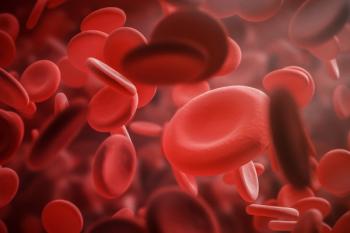
Pharmacogenomics and you
Lately, the term pharmacogenomics has been discussed with increasing frequency in the context of individualized medicine. However, many pharmacists lack an appreciation for the potential impact of this emerging field on professional practice. To fully understand pharmacogenomics, let's explore the foundation of this science from its molecular underpinnings and therapeutic applications to the challenges and opportunities for the pharmacy profession.
Lately, the term pharmacogenomics has been discussed with increasing frequency in the context of individualized medicine. However, many pharmacists lack an appreciation for the potential impact of this emerging field on professional practice. To fully understand pharmacogenomics, let's explore the foundation of this science from its molecular underpinnings and therapeutic applications to the challenges and opportunities for the pharmacy profession.
A history in brief Pharmacogenomics, by definition, refers to the use of genome-wide techniques to delineate the inherited factors influencing drug concentrations and/or effects among individuals or populations.
The concept of genetic variation affecting drug response is certainly not a recent discovery. Publications dating back to the mid-1950s have documented a genetic influence on isoniazid metabolism, with peripheral neuropathy attributed to reduced drug clearance. In subsequent years, this "genetic phenomenon" was further investigated, leading to the categorization of individuals as either "slow" or "fast" acetylators. In patients of the former category, drugs such as procainamide and hydralazine were cautiously dosed in order to prevent drug-induced lupus.
Understanding the basics To fully appreciate the scope of pharmacogenomics, one must understand the basic principles of genetic inheritance and gene expression.
Inheritance stems from the fact that our DNA complement comes in the form of 23 pairs of chromosomes, one of each pair contributed by each parent. The DNA sequences (i.e., genes) on these chromosomes, which encode for cellular proteins, can vary by as few as single nucleotide base substitutions (single nucleotide polymorphisms) or as many as long insertions or deletions.
Such alterations can markedly influence the ability and sequence of the gene to be expressed, which can significantly impact the final protein product in terms of its quantity and function. Though we inherit duplicate copies of each chromosome, the gene on one copy can differ from the corresponding gene on the other copy as described above; in this instance, one copy may override the other and is thus referred to as the dominant allele.
In contrast, a recessive allele refers to a gene that is generally only expressed when there is no dominant allele present. Based on these relationships, researchers have begun to elucidate variants of key genes that lead to differences in drug response.
Preventing negative outcomes Well-characterized proteins govern many aspects of a drug's disposition. Absorption, distribution, metabolism, elimination, and efficacy are dictated by the drug's interactions with various transport, metabolic, and receptor proteins on or near target cells. Since these proteins are subject to genetic variability, they influence the drug's efficacy and metabolic fate. This is evident when one considers the challenges of anticoagulant therapy.
For example, evidence suggests that initial warfarin dosing and maintenance therapy could be improved with knowledge of the patient's genetic profile. Warfarin's primary metabolic pathway is through the hepatic cytochrome P-450 (CYP) enzyme system, namely, the activity of the CYP2C9 isoform. We now recognize that different alleles encoding for CYP2C9 variants with diminished catalytic activity toward warfarin may occur in as many as 40% of Caucasians. These variants predispose patients to a much greater risk of initial overdosing and subsequent bleeding complications.
Also consider the selective serotonin reuptake inhibitors (SSRIs), with which therapy may take months to achieve optimal response. During this time frame, patients may become noncompliant due to a perceived lack of effect or the development of side effects.
Creating positive outcomes We now recognize that numerous factors, subject to genetic variability, can dramatically influence these patients' outcome. It has been recently demonstrated that patients exhibiting the poor-metabolizer type of CYP2D6 experienced a four- to fivefold increase in elimination half-life of fluoxetine as compared with extensive metabolizers.
Similarly, patients treated with various antidepressants (including SSRIs and tricyclics) had significantly higher plasma drug levels and a high frequency of adverse reactions if they exhibited variant CYP450 alleles associated with reduced metabolic capacity.
Also worth mentioning is the growing body of literature evaluating serotonin transporter polymorphisms as the basis for observed pharmacodynamic differences with SSRIs. A recent report demonstrated a significantly faster clinical responsiveness to sertraline in elderly depressed patients who possessed a transporter variant associated with enhanced expression and more efficient neuronal serotonin reuptake.
Newsletter
Pharmacy practice is always changing. Stay ahead of the curve with the Drug Topics newsletter and get the latest drug information, industry trends, and patient care tips.















































































































